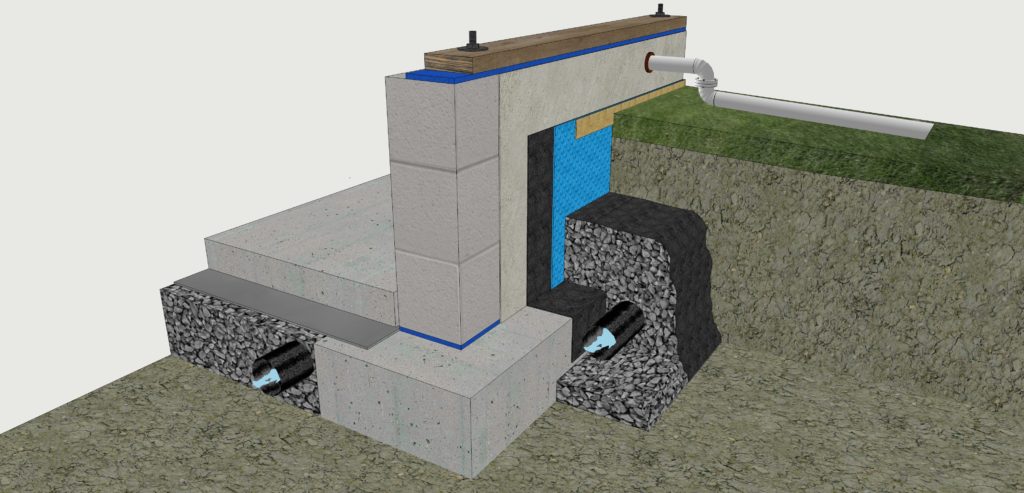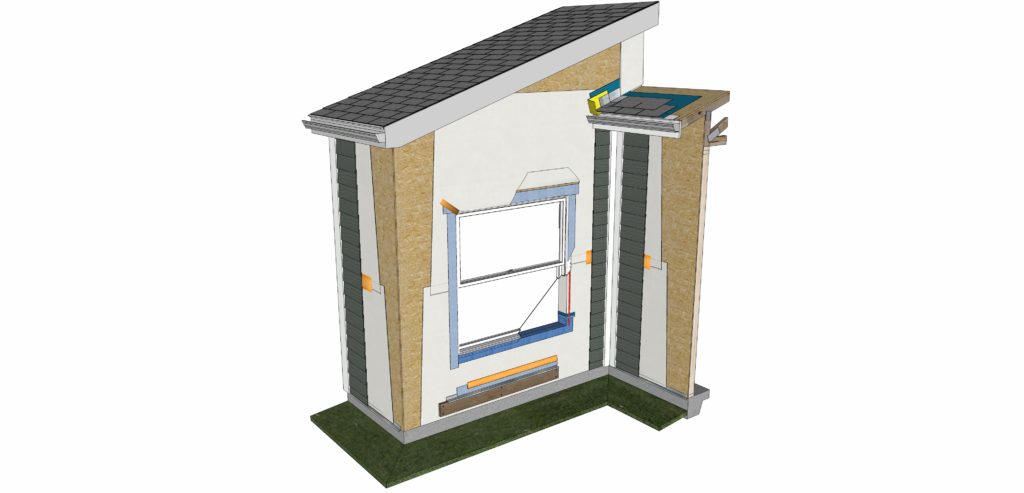Proper protection against water intrusion is crucial to the durability of a home, especially with today’s energy efficiency requirements. Here’s how to keep your homes dry.
Despite significant changes in the design and construction of houses, water intrusion remains one of the most common causes of building damage. Rainwater that finds its way into a house and its walls can lead to condensation, mold, and decay, poor indoor air quality, and can adversely affect the durability of the home. Groundwater entering a basement or crawl space can cause problems not only in those spaces but in upper floors due to increased relative humidity inside the house.

Additionally, today’s houses are far more air-tight and use more insulation than older homes. Water that gets into walls due to insufficient flashing or gutters or which finds its way through other leaks can be trapped inside the framing or insulation with no way to dry. Thus, even minor omissions during design or construction can lead to significant water damage.

The Home Innovation Research Labs recently released a Tech Note on Rain and Groundwater Management: Reducing the Risk of Water Intrusion and Damage. This brochures is fourth in a series highlighting best practices to enhance the performance and durability of houses built to the energy efficiency requirements of today’s codes. Among Home Innovation’s recommendations:
- Rain and groundwater should have a continuous path, from the roof to the foundation, to flow or drain down and away from the house. Plans and specifications should show all drainage and flashing details and installation sequences.
- All flashing and drainage products should be selected in accordance with local building codes and the manufacturer’s installation instructions. Where a licensed design professional is involved in the design, their details and specifications should be strictly followed.
- Downspouts, gutters, flashing, foundation drains, and other components should be inspected during installation to insure a continuous path for drainage is provided.
- Accumulation of moisture (e.g., rainwater) during construction should be minimized. Wall assemblies should be dry before they are enclosed with sheathing (plywood or OSB), gypsum board (drywall), or other wall coverings (e.g., housewraps).
- Homeowners should regularly clean their gutters, make sure downspouts extend a sufficient distance from the house, keep lawn sprinklers from soaking the ground near the house, and make sure bushes and other landscaping do not trap water against the house and its foundation.
When gutters, downspouts, flashing, and foundation drainage are constructed properly, houses are not only more durable but more resilient. Claims for water damage, one of the biggest drivers of insurance losses, are reduced or minimized. Ensuring these important components function well can reduce maintenance costs for the homeowner and can help keep rising insurance rates in check.

